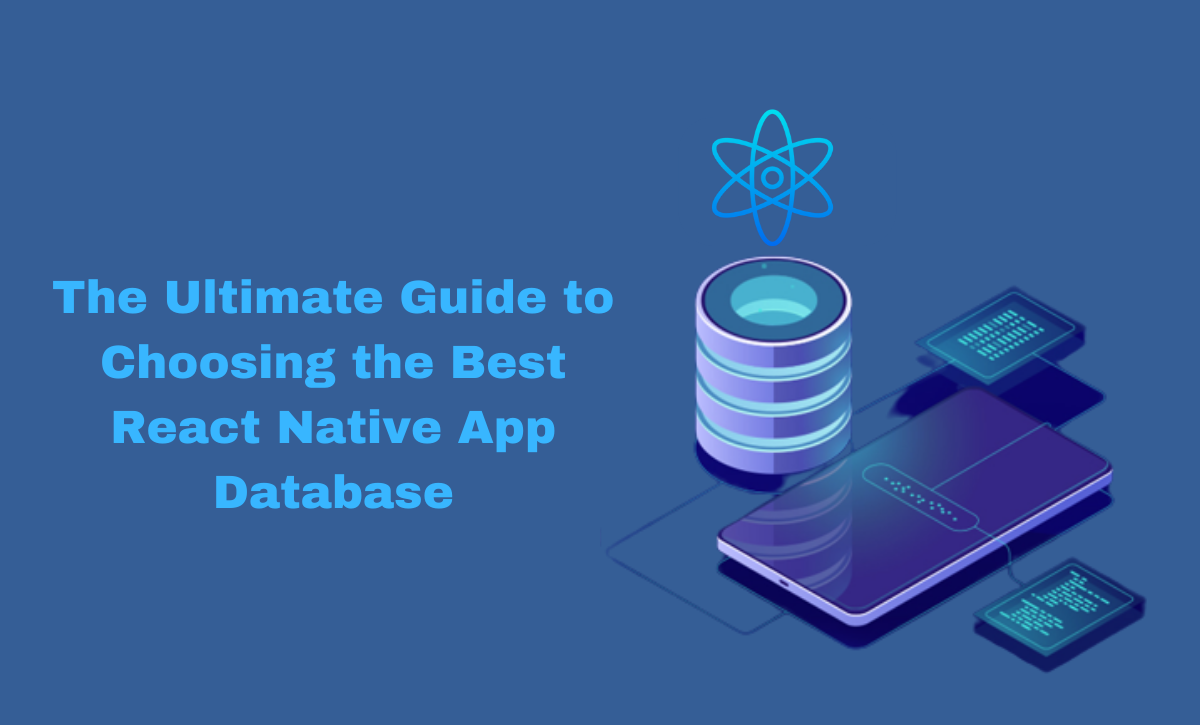Summary
Choosing the right database for your React Native app is an important decision. The database you choose will greatly impact your app’s performance, scalability, and security. In this blog post, we will discuss the factors you need to consider when choosing a database for your React Native app. We will also review some of the most popular React Native databases and provide recommendations for different types of apps.
Factors to Consider When Choosing a React Native Database
- The type of data you need to store
As mentioned above, some databases are better suited for storing certain data types than others. Relational databases are good for storing structured data, such as customer records or product inventory. NoSQL databases are good for storing unstructured data, such as social media posts or sensor data.
Relational databases
Relational databases are the most common type of database. They store data in tables, which are made up of rows and columns. Each row represents a single record, and each column represents a single piece of data about that record. Relational databases are good for storing structured data, such as customer records or product inventory.
NoSQL databases
NoSQL databases are a newer database type not based on the relational model. They store data in various formats, including documents, key-value pairs, and graphs. NoSQL databases are good for storing unstructured data, such as social media posts or sensor data.
The size of your app
If you are developing a small app, you might not need a powerful database. However, if you are developing a large app with many users, you will need a database to handle the load.
The level of security you need
Some databases are more secure than others. If you are developing an app that handles sensitive data, you must choose a database with strong security features.
The cost
Databases can range in price from free to expensive. You will need to choose a database that fits your budget.
Here are some additional factors to consider when choosing a React Native database:
- The ease of use. Some databases are easier to use than others. You must choose a database that you and your team can use.
- The level of support. Some databases offer better support than others. It would be best if you chose a database that offers the level of support you need.
- The community. Some databases have larger and more active communities than others. You will need to choose a database that has a community that can help you if you have any problems.
Popular React Native Databases
SQLite
SQLite is a lightweight, embedded database that is perfect for small apps. It is also very fast and easy to use. SQLite is a good choice for React Native apps that need to store a small amount of data locally on the device.
SQLite is a self-contained, serverless, zero-configuration database engine. This means that it does not require a separate server or any configuration. SQLite is also very fast and efficient, making it a good choice for small apps that need to store a small amount of data locally on the device.
Here are some of the pros and cons of using SQLite for React Native apps:
Pros
- Lightweight and efficient
- Easy to use
- No need for a separate server
- Open source
Cons
- It can only store a small amount of data
- Not as scalable as other databases
- Not as secure as other databases
Realm
Realm is a mobile database that is optimized for React Native apps. It is very fast and easy to use and offers strong security features. Realm is a good choice for React Native apps that need to store a moderate amount of data locally on the device.
Realm is a mobile database that is built on top of SQLite. It offers a number of features that make it a good choice for React Native apps, including:
- Fast and efficient performance
- Strong security features
- Easy-to-use API
- Automatic data synchronization
- Offline support
Here are some of the pros and cons of using Realm for React Native apps:
Pros
- Fast and efficient
- Easy to use
- Strong security features
- Automatic data synchronization
- Offline support
Cons
- Can only store a moderate amount of data
- Not as scalable as other databases
- Not as open source as other databases
Firebase
Firebase is a BaaS (Backend as a Service) platform that offers a variety of database services, including real-time data synchronization, offline support, and automatic scaling. Firebase is a good choice for React Native apps that need to store a large amount of data in the cloud.
Firebase offers a number of features that make it a good choice for React Native apps, including:
- Real-time data synchronization
- Offline support
- Automatic scaling
- Strong security features
- Easy-to-use API
Here are some of the pros and cons of using Firebase for React Native apps:
Pros
- Real-time data synchronization
- Offline support
- Automatic scaling
- Strong security features
- Easy-to-use API
Cons
- Not as scalable as other databases
- Not as open source as other databases
- It can be expensive for large apps
MongoDB
MongoDB is a NoSQL database popular for storing large amounts of unstructured data. It is very scalable and easy to use. MongoDB is a good choice for React Native apps that need to store a large amount of data in the cloud, such as social media apps or e-commerce apps.
MongoDB is a document-based database that stores data in JSON documents. It is very scalable and easy to use, making it a good choice for large apps that need to store a large amount of data.
Here are some of the pros and cons of using MongoDB for React Native apps:
Pros
- Scalable
- Easy to use
- Flexible data model
- Open source
Cons
- Not as fast as other databases
- Not as secure as other databases
- It can be complex to manage
Cassandra
Cassandra is another NoSQL database popular for storing large amounts of data. It is very scalable and fault-tolerant. Cassandra is a good choice for React Native apps that need to store a large amount of data in the cloud and be highly available, such as financial or gaming apps.
Cassandra is a distributed database that can be scaled horizontally to handle large amounts of data. It is also fault-tolerant, meaning it can continue operating even if some of the nodes in the cluster fail.
Here are some of the pros and cons of using Cassandra for React Native apps:
Pros
- Scalable
- Fault-tolerant
- Open source
Cons
- Not as fast as other databases
- Not as easy to use as other databases
- It can be complex to manage.
Recommendations
The best database for your React Native app will depend on the specific needs of your app. SQLite might be a good option if you are developing a small app with a limited budget. If you are developing a large app with a lot of users, consider Realm, Firebase, MongoDB, or Cassandra.
Conclusion
Discover the perfect database for your React Native app. Our blog post highlights key factors to consider, ensuring you choose a database that meets your app’s needs. Trust our expert React Native app development services for a successful product.
Here are some additional tips for choosing a React Native database:
- Consider the future growth of your app. If you plan on expanding your app, choose a database that can scale with your app.
- Read reviews of different databases. Many online resources can help you to compare different databases.
- Talk to other developers. Get recommendations from other developers who have used different databases.




